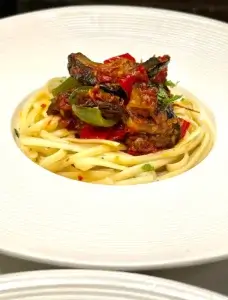Introduction
In the vibrant world of Nigerian cuisine, food presentation is an art form that elevates dining experiences. As the saying goes, “we eat with our eyes first,” and this holds true especially for Nigerian dishes, where the fusion of colors and textures plays a significant role. Mastering plating techniques not only enhances the visual appeal but also enriches the overall dining experience, making it memorable and enticing.
Importance of Food Presentation
The significance of food presentation cannot be overstated. According to a study published in the journal Appetite, aesthetically pleasing food can increase perceived taste quality by up to 29%. This highlights the impact of visual appeal on our perception of taste. For Nigerian dishes, which are known for their bold flavors and textures, effective plating can amplify these aspects, making the dishes more appealing to both local and international palates.
Plating Techniques for Nigerian Dishes

- Color Contrast: Utilize the natural vibrancy of Nigerian ingredients like red peppers and green spinach to create visually stunning contrasts on the plate.
- Layering: Stack components like jollof rice, fried plantains, and grilled chicken to add depth and dimension.
- Garnishing: Add fresh herbs such as cilantro or parsley to introduce an element of freshness and color.
- Use of Traditional Serving Ware: Serve dishes on traditional wooden platters or ceramic bowls to enhance authenticity.
For more insights on transforming your culinary skills, visit TasteBudz NG for expert advice and innovative recipes.
Culinary Aesthetics
Culinary aesthetics in Nigerian dishes go beyond mere presentation; they are about storytelling and cultural expression. The vibrant colors and textures of Nigerian cuisine tell a story of rich cultural heritage and diversity. Incorporating these elements into plating not only makes the dishes more appealing but also pays homage to the roots of Nigerian culinary traditions.

Frequently Asked Questions
What are some common mistakes in food presentation?
Common mistakes include overcrowding the plate, using clashing colors, and neglecting garnishes. These can detract from the overall visual appeal.
How can I practice plating techniques at home?
Start by experimenting with different plate sizes and shapes. Use small portions to practice layering and garnishing effectively. Observe professional chefs or online tutorials for inspiration.
Why is plating important in Nigerian cuisine?
Plating is crucial as it highlights the unique flavors and textures of Nigerian cuisine, making it more appealing to a global audience.
Conclusion
Mastering the art of plating in Nigerian dishes is a journey of creativity and cultural celebration. By focusing on food presentation and culinary aesthetics, Nigerian cuisine can captivate diners worldwide. Whether you’re a professional chef or a home cook, embracing these techniques can transform your culinary creations into visual masterpieces. For more tips and recipes, explore TasteBudz NG, your go-to resource for all things culinary.






